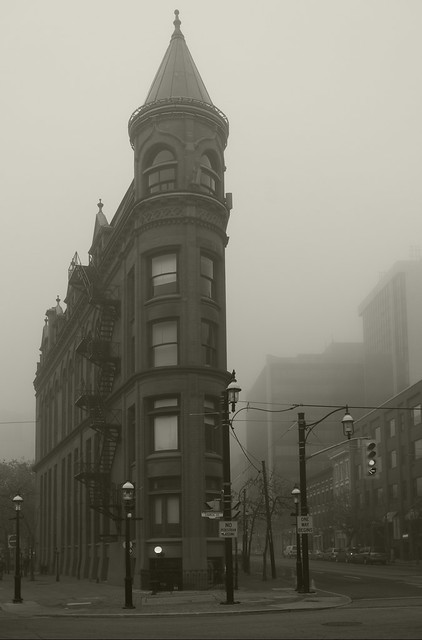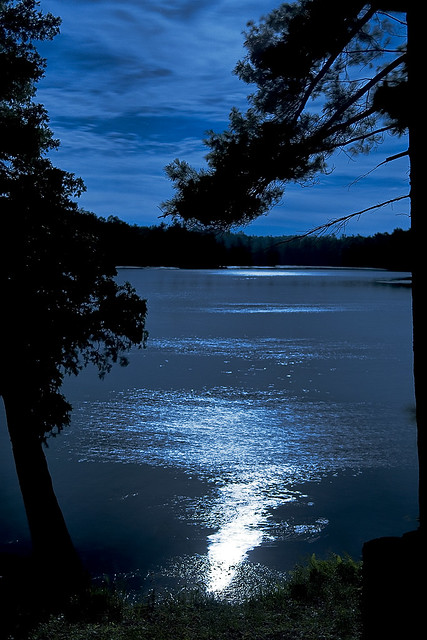Forum Replies Created
-
AuthorPosts
-
Thank-you tom and anna. I was fortunate to work with an outstanding dancer.
Thank-you tom and anna. I was fortunate to work with an outstanding dancer.
Lens, oooh there is a big topic.
Most people think of focal lengths in 35 mm film (or full frame) terms, even though the majority of cameras use a smaller sensor. To avoid confusion, I will talk in terms of the sensor that your camera is using which has a ration of 1 / 1.6 to a full frame sensor.
The Basics:
A prime lens has a fixed focal length, whereas a zoom lens covers a range of focal lengths.A normal lens produces an image which is the way you would see the image if you were standing in front of the subject, (i.e. it has approximately the same angle of view as your eyes.) For your camera a normal lens would have a focal length of 31 mm, (and for a full frame or 35 mm film camera it would be 50 mm. The conversion factor is 1.6, and I mention this one time only for completeness. I am assuming you do not shoot film, so we can leave conversions alone.)
A wide angle lens is any lens with a shorter focal length that normal, though most people think of wide angle lenses as running somewhere between 1/2 and 3/4 of normal, (i.e. 16 – 24 mm) for your camera. Ultra-wide lenses are anything less than 1/2 of normal. A fisheye lens is an ultra wide angle lens which distorts to create the bulging look. (I think of it is as the clown lens, as you can just go nuts having fun creating distorted images.) Telephoto lenses are lenses which are greater than normal running anywhere from 1.3 times normal and up, (i.e. 40 mm and up for your camera.) Anything from 3/4 to 1.3 times normal I think of as close enough to normal to not quibble to much. Super-telephoto senses are the great big honking lenses that bird, sports and journalists use when they are a long way from their subjects. These run from 4 times normal and up, (i.e. 125 mm + for your camera.) Macro lenses are a specialty lens for shooting objects from a close distance, such as insects, and are generally telephoto. Good macro lens are usually prime lenses and generally are able to resolve detail better than other lenses of their focal length. They enable small objects to fill more of your sensor than with non-macro lenses.
F-stops are the next thing you will want to think about. The minimum F-stop of a lens is the widest aperture that the lens has. Shooting at the widest aperture is called shooting “full open”. You will shoot at or close to full open in low light conditions, and for portrait photography, (so that everything other than your subject is out of focus.) The best resolution of most lens occurs when you stop down between 1 and 3 stops. For example, I have a 105 mm F2.8 lens, and it offers the sharpest images (for an in focus subject) at F4 to F8. For my lens, F2.8 is a little soft, and beyond F8, a phenomena known as diffraction causes loss of overall sharpness.
Choosing a lens is matter of knowing what you want the lens to do, and what characteristics are important. As a nightclub photographer the low light performance would be the major factor, and requires a lens with a wide maximum aperture (F1 to F1.4.) Wide aperture lens are expensive. If I was interested in landscape and architectural photography, having a range of lenses which includes a wide angle, normal, and telephoto lens would be what I would want. If I had lots of $$$, I would probably buy 3 excellent prime lenses, or if I was on a budget a single zoom that covered the range of 1/2 to 2 times normal (or in your case 16 – 50 mm.) The lens you mentioned (18 – 55 mm) would cover off the majority of needs for landscape and architectural photography. It would also be fine for portrait work. It would not be a good candidate for bird, wildlife and macro photography. As you can see you have to think about a few things when buying a lens. The two major things are what you want to use it for, and how much you are willing to pay.
I hope that this helps clarify the basics. Given your camera, and a reasonable budget, the lens you mention is likely an excellent candidate. If you start really getting bitten by the photography bug, you will spend time learning more and more both technically and artistically. The two go hand in hand.
Lens, oooh there is a big topic.
Most people think of focal lengths in 35 mm film (or full frame) terms, even though the majority of cameras use a smaller sensor. To avoid confusion, I will talk in terms of the sensor that your camera is using which has a ration of 1 / 1.6 to a full frame sensor.
The Basics:
A prime lens has a fixed focal length, whereas a zoom lens covers a range of focal lengths.A normal lens produces an image which is the way you would see the image if you were standing in front of the subject, (i.e. it has approximately the same angle of view as your eyes.) For your camera a normal lens would have a focal length of 31 mm, (and for a full frame or 35 mm film camera it would be 50 mm. The conversion factor is 1.6, and I mention this one time only for completeness. I am assuming you do not shoot film, so we can leave conversions alone.)
A wide angle lens is any lens with a shorter focal length that normal, though most people think of wide angle lenses as running somewhere between 1/2 and 3/4 of normal, (i.e. 16 – 24 mm) for your camera. Ultra-wide lenses are anything less than 1/2 of normal. A fisheye lens is an ultra wide angle lens which distorts to create the bulging look. (I think of it is as the clown lens, as you can just go nuts having fun creating distorted images.) Telephoto lenses are lenses which are greater than normal running anywhere from 1.3 times normal and up, (i.e. 40 mm and up for your camera.) Anything from 3/4 to 1.3 times normal I think of as close enough to normal to not quibble to much. Super-telephoto senses are the great big honking lenses that bird, sports and journalists use when they are a long way from their subjects. These run from 4 times normal and up, (i.e. 125 mm + for your camera.) Macro lenses are a specialty lens for shooting objects from a close distance, such as insects, and are generally telephoto. Good macro lens are usually prime lenses and generally are able to resolve detail better than other lenses of their focal length. They enable small objects to fill more of your sensor than with non-macro lenses.
F-stops are the next thing you will want to think about. The minimum F-stop of a lens is the widest aperture that the lens has. Shooting at the widest aperture is called shooting “full open”. You will shoot at or close to full open in low light conditions, and for portrait photography, (so that everything other than your subject is out of focus.) The best resolution of most lens occurs when you stop down between 1 and 3 stops. For example, I have a 105 mm F2.8 lens, and it offers the sharpest images (for an in focus subject) at F4 to F8. For my lens, F2.8 is a little soft, and beyond F8, a phenomena known as diffraction causes loss of overall sharpness.
Choosing a lens is matter of knowing what you want the lens to do, and what characteristics are important. As a nightclub photographer the low light performance would be the major factor, and requires a lens with a wide maximum aperture (F1 to F1.4.) Wide aperture lens are expensive. If I was interested in landscape and architectural photography, having a range of lenses which includes a wide angle, normal, and telephoto lens would be what I would want. If I had lots of $$$, I would probably buy 3 excellent prime lenses, or if I was on a budget a single zoom that covered the range of 1/2 to 2 times normal (or in your case 16 – 50 mm.) The lens you mentioned (18 – 55 mm) would cover off the majority of needs for landscape and architectural photography. It would also be fine for portrait work. It would not be a good candidate for bird, wildlife and macro photography. As you can see you have to think about a few things when buying a lens. The two major things are what you want to use it for, and how much you are willing to pay.
I hope that this helps clarify the basics. Given your camera, and a reasonable budget, the lens you mention is likely an excellent candidate. If you start really getting bitten by the photography bug, you will spend time learning more and more both technically and artistically. The two go hand in hand.
I have to add my photo gear soon as a rider on my household insurance, (before I head to Cuba) with a D3x and assorted lenses.
I have to add my photo gear soon as a rider on my household insurance, (before I head to Cuba) with a D3x and assorted lenses.
I walk boldly, carry a large tripod as if it were a gattling machinegun, and have my camera strap firmly wrapped around my arm. Otherwise, be aware of where you are and who is around you, and don’t be distracted, (i.e. don’t use cellphone, ipod, et cetera.)
In Toronto, Canada I have never had a problem downtown either at night or day, and that is carrying a Nikon D3x with a backpack of lenses.
One thing that I am currently investigating is Platinum / Palladium printing. While making large images in this medium would be astronomically expensive, moderate sized images can be made which are not quite so expensive. (I know this is a divergence, but your comments bring to mind that as an artist this medium has something to offer, and especially with respect to light, and texture. If you have ever seen a good platinum print, it has a reach out and touch it quality that is difficult to resist.)
Two major downs are the cost, and the time required to learn how to calibrate the contact negatives which need to be made to create first rate prints. (One other down is that you need to treat the chemistry with greater care than normal photographic chemistry due to a higher toxicity.) One nice thing is that the emulsion is relatively insensitive to lower spectrum visible light, which means the “dark” room can be lit with tungsten bulbs. Exposure is by U/V lamp contact printing, or you can even use the sun if you want, but exposure control is not as precise.
One thing that I am currently investigating is Platinum / Palladium printing. While making large images in this medium would be astronomically expensive, moderate sized images can be made which are not quite so expensive. (I know this is a divergence, but your comments bring to mind that as an artist this medium has something to offer, and especially with respect to light, and texture. If you have ever seen a good platinum print, it has a reach out and touch it quality that is difficult to resist.)
Two major downs are the cost, and the time required to learn how to calibrate the contact negatives which need to be made to create first rate prints. (One other down is that you need to treat the chemistry with greater care than normal photographic chemistry due to a higher toxicity.) One nice thing is that the emulsion is relatively insensitive to lower spectrum visible light, which means the “dark” room can be lit with tungsten bulbs. Exposure is by U/V lamp contact printing, or you can even use the sun if you want, but exposure control is not as precise.
Textural subjects where colour is either distracting or seems to add little to the image are often excellent candidates for B&W conversion.
Also, the rules of composition which apply to a colour shot are merely a superset of those for B&W. (In colour shooting, balance between subjects of different colours is important, and it is important in B&W with respect to toning during B&W conversion, but not as colour perse.)
Classic B&W subjects are portraits, especially high contrast, dark-keyed, Rembrandt style portraits.) Architecture often is well suited to B&W as well as landscape, (Ansel Adams anyone?)
Any way you cut it though, you will shoot in colour, and then perform conversions to the image. This is a major boon to the film shooting B&W photographer, where filters needed to be applied at the time of shooting to create a particular feel, (such as using a red filter to darken blue skies and make clouds stand out.) The one exception to not needing filters for B&W is infrared, (unless you have a camera that has had an I/R filter applied over the sensor.)
Textural subjects where colour is either distracting or seems to add little to the image are often excellent candidates for B&W conversion.
Also, the rules of composition which apply to a colour shot are merely a superset of those for B&W. (In colour shooting, balance between subjects of different colours is important, and it is important in B&W with respect to toning during B&W conversion, but not as colour perse.)
Classic B&W subjects are portraits, especially high contrast, dark-keyed, Rembrandt style portraits.) Architecture often is well suited to B&W as well as landscape, (Ansel Adams anyone?)
Any way you cut it though, you will shoot in colour, and then perform conversions to the image. This is a major boon to the film shooting B&W photographer, where filters needed to be applied at the time of shooting to create a particular feel, (such as using a red filter to darken blue skies and make clouds stand out.) The one exception to not needing filters for B&W is infrared, (unless you have a camera that has had an I/R filter applied over the sensor.)
-
AuthorPosts





